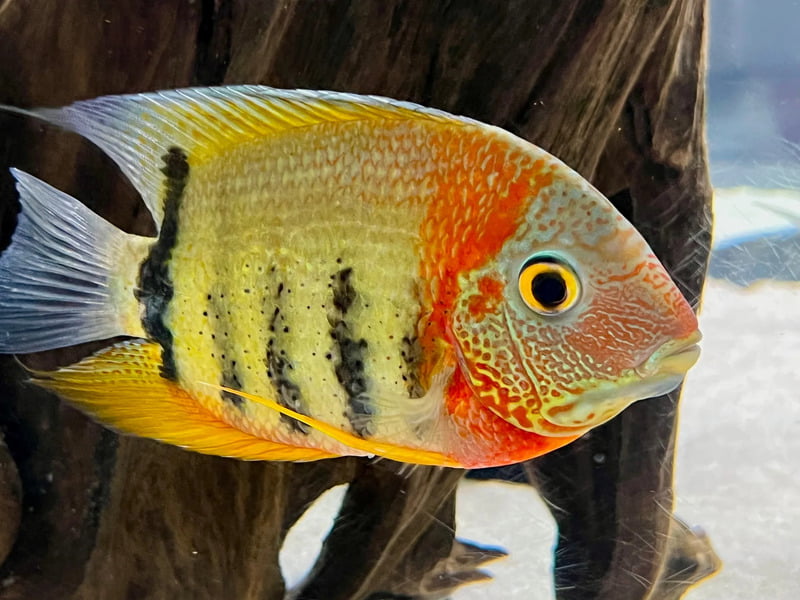
Rotkeil Severum
The Rotkeil Severum, also known as the Red Shoulder Severum, is a beautiful and popular freshwater fish in the aquarium hobby. Its scientific name is Heros cf. efasciatus. The name "Rotkeil" is German and translates to "red wedge," which describes the distinctive red coloring on its shoulders.
Here are some key features and information about the Rotkeil Severum:
Appearance:
- The Rotkeil Severum has a disc-shaped body with striking coloration. The most prominent feature is the vibrant red coloration on its shoulders, which forms a wedge-shaped pattern.
- The body coloration can vary from greenish to yellowish, and the fins are typically translucent.
Size:
- These fish can grow to a size of around 8 to 10 inches (20 to 25 centimeters) in captivity, although some individuals may reach slightly larger sizes.
Behavior:
- Rotkeil Severums are generally peaceful cichlids, especially when compared to some other cichlid species. However, they can become territorial, particularly during breeding.
Tank Requirements:
- They require a spacious aquarium with plenty of hiding places and suitable decor like rocks and driftwood.
- A tank size of at least 55 gallons is recommended for a pair, and larger tanks are better for groups or community setups.
Water Parameters:
- Maintain a tropical freshwater environment with a temperature range of 75-82°F (24-28°C).
- The water should be slightly acidic to neutral, with a pH level between 6.0 and 7.5.
Diet:
- Rotkeil Severums are omnivorous. They accept a variety of foods, including high-quality pellets, flakes, live or frozen foods like brine shrimp, bloodworms, and chopped vegetables.
Compatibility:
- They can be kept in a community aquarium with other peaceful fish of similar size. However, it's essential to monitor their interactions, especially during breeding.
Breeding:
- Rotkeil Severums are substrate spawners, and they typically form pairs for breeding. Provide flat surfaces, such as rocks or pieces of slate, for them to lay their eggs.
Always do thorough research and ensure that you can provide the appropriate care for any fish species before adding them to your aquarium.



